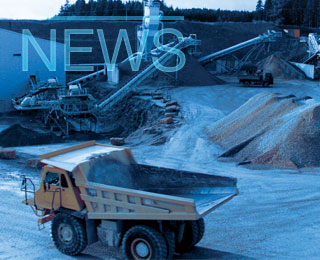A team of experts from EPFL (Switzerland), ETH Zurich and a Geneva-based architecture firm has developed a new type of non-reinforced concrete made from stone offcuts. Their method, known as ‘Cyclopean’, draws on ancient technologies uncovered in historical archives to reduce the use of carbon-intensive cement-based binders.
In October this year, the team built six load-bearing walls in Lucery-Villars, Switzerland, using recovered stone-quarry waste and fieldstone. The prototype structures were divided into two groups to test two different construction methods and three types of mortar-based binders. The first method involved placing the mortar in the formwork before adding the stones, while in the second method, the stones were laid in place first and then coated with mortar. Of the three binders tested, one contained a small quantity of cement, another was a lime-based mixture, and the third was made from infertile soil.
At present, stone quarry waste is processed before being reused, which consumes large amounts of energy, along with the energy needed to produce the cement used in the concrete. In addition, concrete is made from inert materials and the available options are limited.
“For centuries, builders tried to cut costs by limiting how much cement they used and incorporating recycled waste materials into their concrete,” says Salvatore Aprea, head of the Archives of Modern Construction (Acm). “The challenge now is to revive these old methods – not for financial reasons but for the sake of our planet."
“We found detailed experimental results where engineers had tested the strength of mortars with different lime concentrations. In most cases, these mortars were made from materials sourced locally or nearby," added Mr Aprea.
The experts also studied early concrete-application methods. Prof Guillaume Habert, who holds the ETH Zurich Chair, worked with Marlène Leroux, a partner at Archiplein, and two of her colleagues at Archiplein – architect Francis Jacquier and engineer Olivier Dahenne – to develop computer models for identifying new mortar formulas inspired by the past but fit for modern specifications. Following this initial research, the team’s next step will be to develop standardised, mechanised, low-carbon wall construction methods by building prototypes, running strength tests and producing comparative tables.
Published under Cement News

